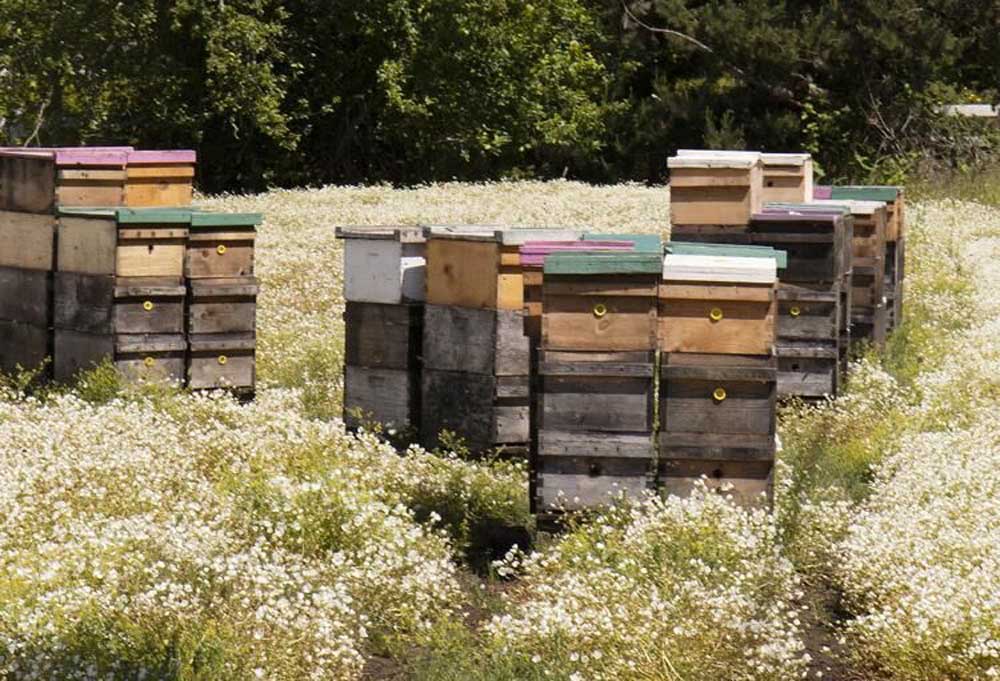Beekeepers face downward trends for pollination services
Published 4:23 pm Tuesday, January 7, 2025

- Honey bee hives in Oregon.
Growers are cutting back on pollination as they face increased costs, an industry expert said.
“Pollination isn’t an option for folks who are struggling to meet basic expenses,” said Tim Hiatt, a Washington State Beekeepers Association board member.
Every region in the U.S. saw pollination value declines compared to 2023, but that was steeper in the West, according to the U.S. Department of Agriculture’s National Agricultural Statistics Service.
Paid pollination value in the Pacific Northwest and Alaska was $18.3 million in 2024, down 26% from the previous year.
Overall, the U.S. pollination industry was worth $400.8 million in 2024, down 3.3%.
Half or more of beekeepers’ revenue could come from pollination services.
The industry already faced heavy colony losses from mites and other problems, as well as increased costs for treatment and labor. While Hiatt expects pollination costs to creep upwards from inflation in 2025, Joe Maresh, Oregon Beekeepers Association past president, expects prices to rise significantly due to colony die-offs.
“About half the beekeepers I know are looking at 50% losses. It’s not just in Oregon and Washington. It’s across the United States,” Maresh said.
Northwest and Alaska paid pollinated acres dropped 16% to 240,550 and the price per acre declined 14% to $70.90.
Colonies used decreased 7% to 370,500 and the price per colony also dropped 20%, hitting $49.50.
While there were steep declines from 2023 data, many metrics more closely aligned with figures from 2022 ($17.5 million value, not adjusted for inflation, and 220,660 acres) and 2017 ($16.7 million value and 245,000 pollinated acres).
The Northwest’s tree fruit industry, and Washington state apples in particular, drives pollination figures in the region.
But the total value of the major tree fruits — apples, cherries and pears — totaled only $11.1 million in 2024, down 25% from the previous year.
Apples had 109,400 paid pollinated acres, down 22%, 108,000 colonies used, down 34%, and $6.3 million in total value of pollination, down 36%. The price per acre dropped 17% to $56.70 and the price per colony dipped 2% to $58.10.
The total pollination value of the blueberries, cranberries and raspberries in the region was $3.12 million, down 31% from 2023.
Almonds, mostly grown in California, were the top crop for pollination in the nation.
“There simply aren’t enough bees in the U.S. to effectively pollinate almonds,” Hiatt said. Hives are pulled from throughout the country to meet demand and that drives the high price, leading to $325.8 million in value.
About 1.8 million colonies were used over 1.06 million acres. The price per acre was $305 and the price per colony was $181.
Hiatt was concerned as he’s heard of die-offs entering the fall. With winter colony losses, bees might be salvaged by combining colonies before almond pollination.
“If hives are dying at higher rates in the fall, there’s nothing you can work with come 2025,” he said.
Hiatt said growers should contact beekeepers early and lock in hives for the upcoming season.
“If we do end up with a shortage, people will have to contract with folks from other states and that will be more expensive,” Hiatt said.



